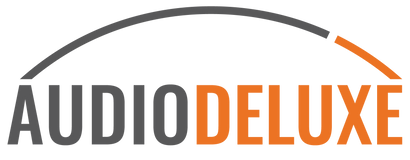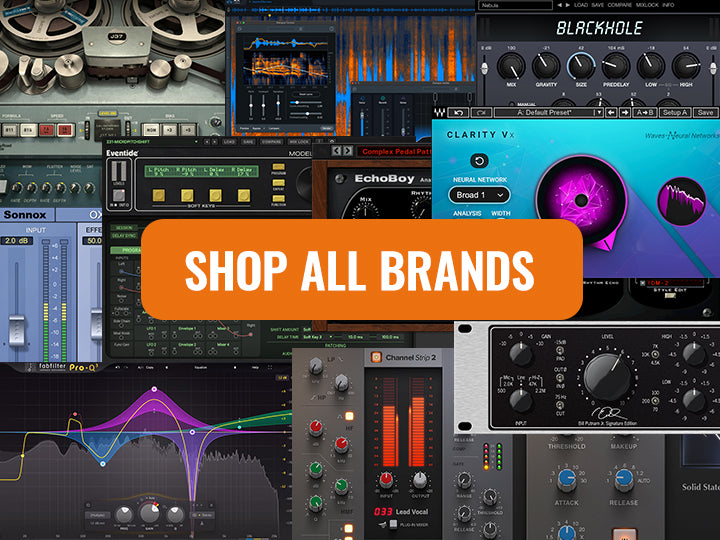Your Cart is Empty
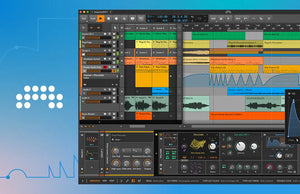
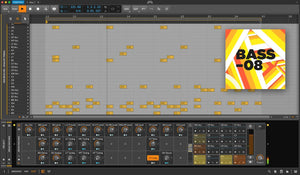
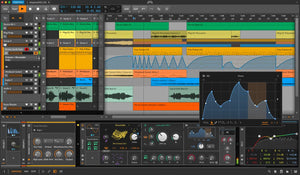
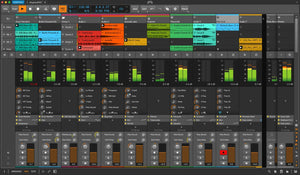
Bitwig Studio Essentials 12 Month Upgrade Plan
Requires a valid Essentials license to be installed
TEST4b
$49.00$39.00Description
- Unlimited audio, instrument, and hybrid tracks and scenes
- Unlimited VST/CLAP plug-ins with side-chain support
- Professional editing and arranging tools
- 3 audio-stretching algorithms
- Native hardware integration with MIDI/CV compatibility, plus full MPE support and multitouch integration
- 3 display profiles (single screen only)
- 4/8 audio i/o busses-
Version 5 Key Features
MSEGs: Beyond Envelopes
A multi-segment envelope generator (MSEG) is a tool for drawing custom signals for envelopes, automation shapes, looping patterns, oscillator curves, waveshapers, sequencers etc. We created five different kinds of MSEGs that can be used as Grid modules, and two of them are also available as modulators. Separate devices means each one is focused on and optimized for its particular task.
Segments is a customizable envelope that can be used as a Grid and Polymer module or as a modulator that controls any parameter. Four Play Mode options are available for Segments:
- One-shot - Plays through the entire shape (while the voice is alive) when a note is triggered
- Hold - Can use any one of the curve's points as the hold/sustain level, which also acts as the release start
- Looping - Can loop forwards between any two of the curve's points on sustain; the loop end point is also the release start
- Ping Pong - Can loop forwards and backwards between any two of the curve's points on sustain; the loop end point is also the release start
Curves is an LFO modulator and Grid module that can sync to the beat time or groove.
Scrawl is a draw-your-own oscillator for The Grid and Polymer Bitwig-s hybrid modular synth. Its anti-aliasing helps make any shape work and sound good.
Slopes is a pattern sequencer for The Grid with stereo phase options.
Transfer is a waveshaper for transforming incoming audio or other signals in The Grid.
Clicking any curve display opens the curve editor in a Pop-out Editor window that allows for easy freehand drawing. There are also shortcuts for jumping to double time or triplets.
All your designs can be saved as a BWCURVE file and loaded in another MSEG. A visual browser displays all presets and user content at a glance.
Modulation, Elevated
Bitwig's modulation system sets itself apart with a powerfully simple approach: Any control source - including audio or CV signals - can affect any device or plug-in. In Bitwig Studio 5, our modulators are no longer limited to devices - they can grab the mixer and project controls as well. That means one LFO can modulate any device on the same track, as well as the track's panning, sends, and other parameters. Move that LFO to the project level to add modulations to all devices, channel strips, and transport targets.
Furthermore, MSEGs aren't the only 5.0 modulators with Pop-out Editor windows. The Steps and Keytrack+ modulators, as well as The Grid's data sequencers, also got resizable panes for cleaner editing and some helpful new functions.
New Performance Gestures
Performing live with Bitwig Studio just got more exciting with updates to the Clip Launcher. Users can now set Next Actions to occur when a key or pad is released in addition to when it's launched. ALT triggers offer a second option for activating scenes or clips. These features allow performers to decide how their set will unfold in the moment, as they can (for instance) tap a clip to launch it at the next bar line, or ALT-trigger to immediately swap to the new clip.
Project-wide normal and ALT-trigger gestures can be set in one place, and you can customize any clip or scene to have its own settings. That includes release options for both normal and ALT gestures, legato options for following the playing clip or the project transport, and a revamped Next Action section with simple loop counts.
Since all tracks now have their own remotes, the mixer offers a bird's-eye view of the most important parameters. That way, building a customized set of mix and performance controls is easy. And new mapping options allow users to launch scenes and clips with any hardware.
--
